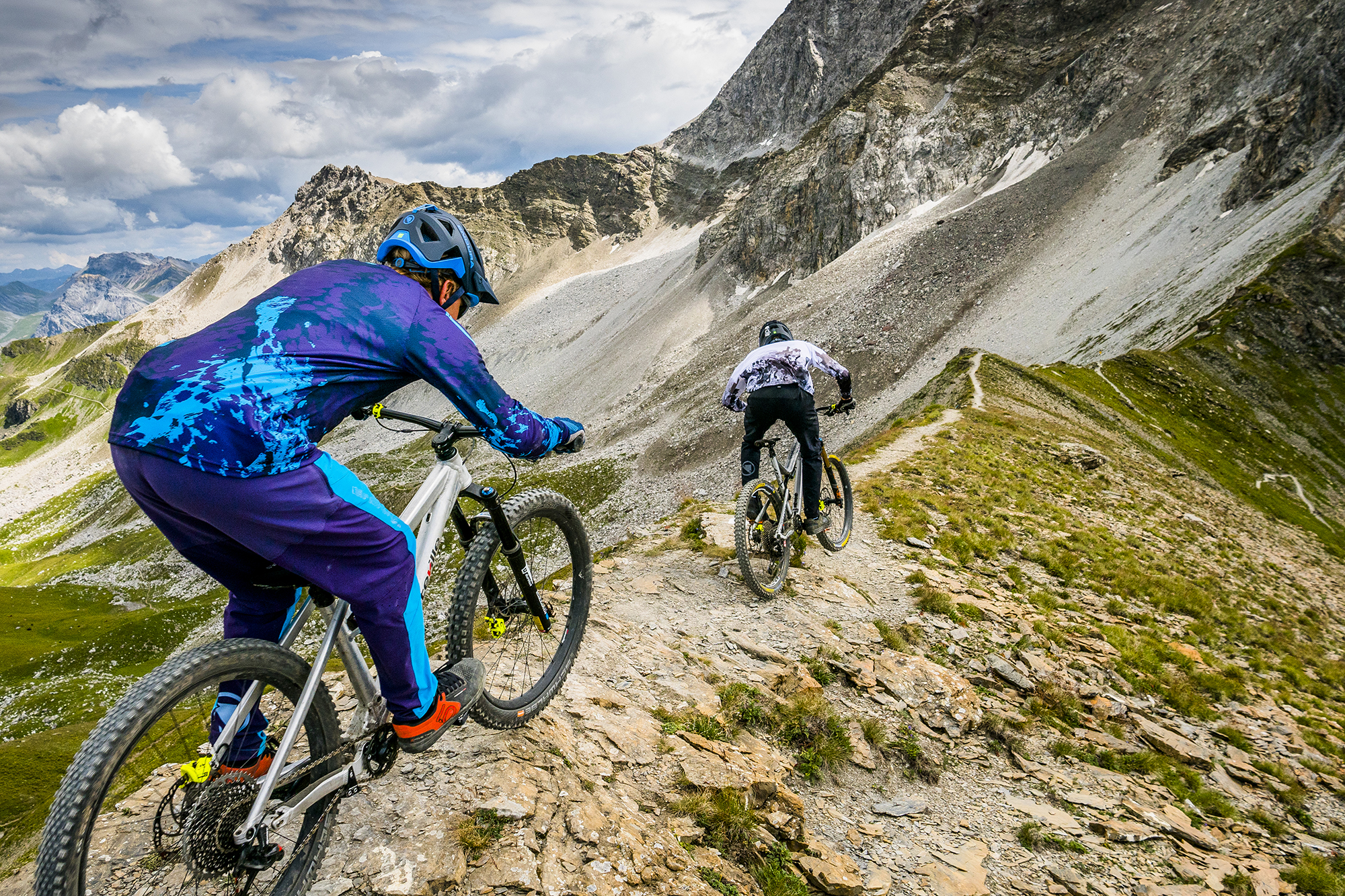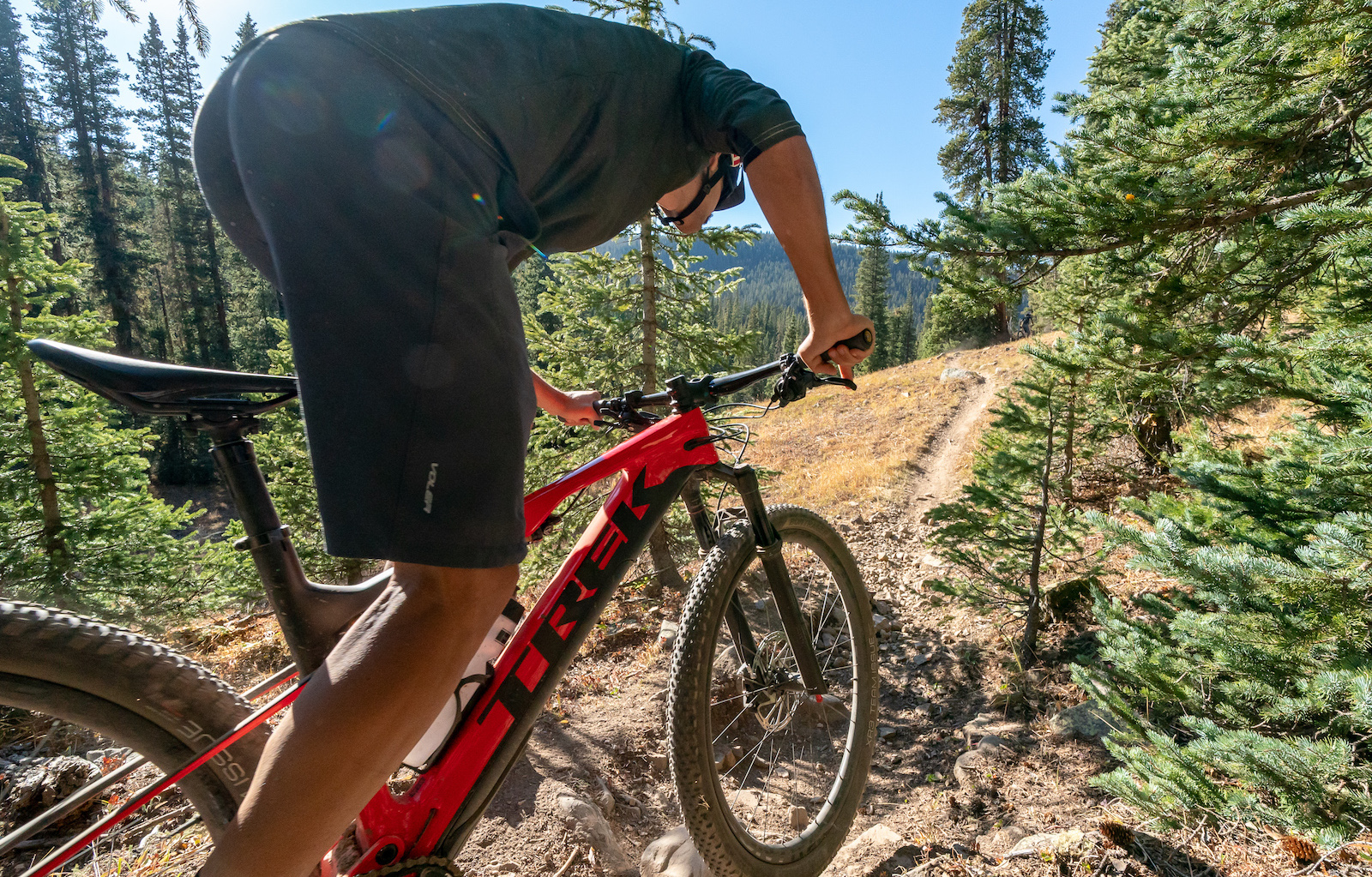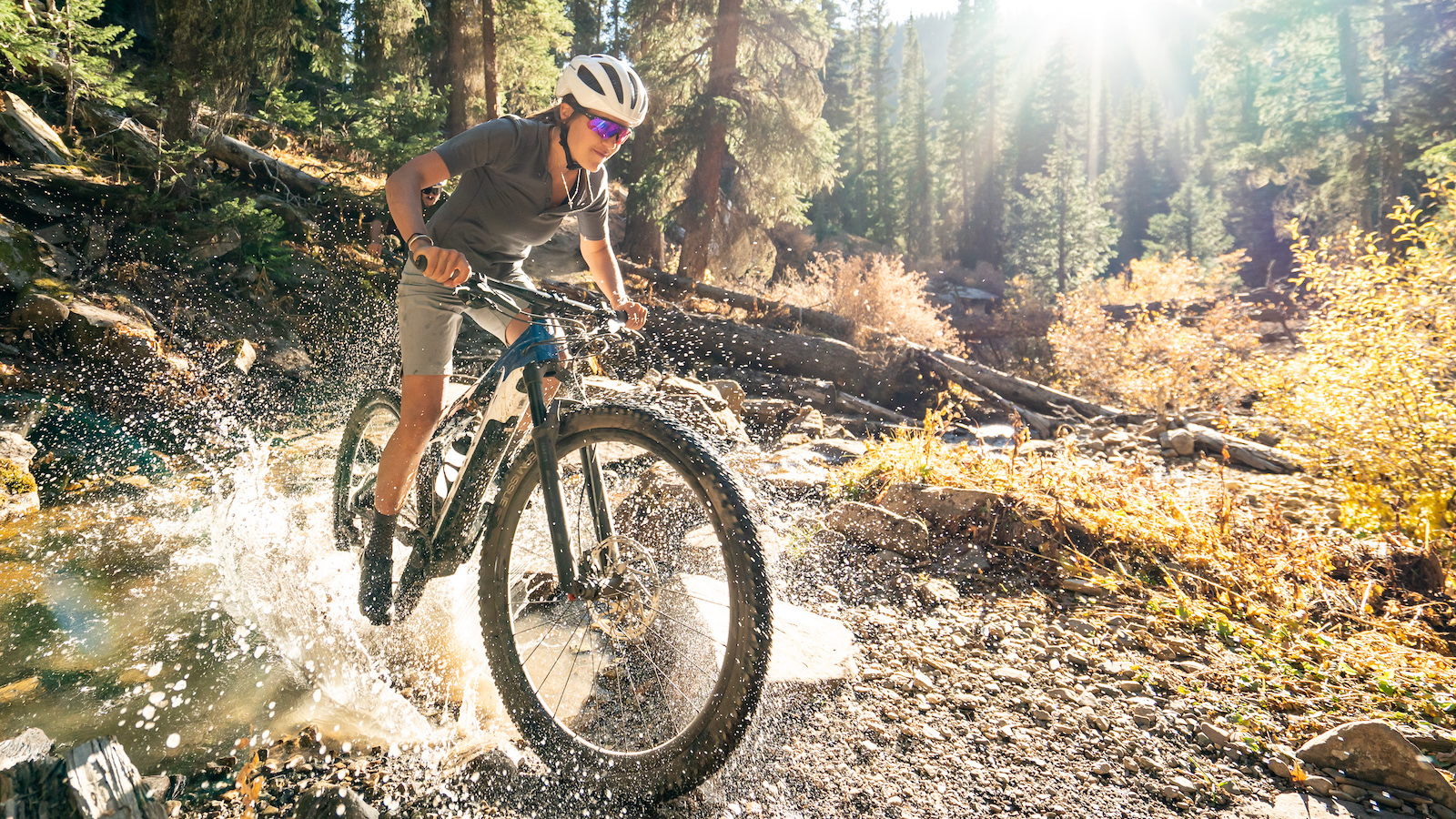How dangerous is mountain biking?
The most common reasons that mountain bikers crash, and how to avoid them

How dangerous is mountain biking? The obvious answer is ‘it depends’, some of us don’t think we’re doing proper mountain biking unless we’re on the very edge of control, while others think they’re safer by being stiff and hesitant. Yet the best riders do amazing things by progressively building up to a zen-like state of focus and flow.
“Most crashes at BikePark Wales come from riders trying to progress too quickly, or hitting unavoidable features underprepared, or being overconfident and letting attention lapse on an easy trail,” says BPW head coach Griff Rhys Morgan.
- How to start mountain biking: steps to getting out and hitting the trails for the first time
- Best mountain bikes for beginners: bikes for new mountain bikers
So maybe our question should be ‘how dangerous are mountain bikers?’ – and the answer is often ‘more dangerous than we need to be’. The good news is that a few basic changes to your mindset will reduce your risk of wiping out in numerous scenarios, including drops and jumps of all sizes, roots and rock gardens. And even better, you’ll ride smoother and faster, and with just as much of a buzz.
Why mountain bikers crash
1. They move onto the bigger stuff too quickly
You can sum this one up like this: bad technique works until it doesn’t.
“A rider’s instinct is to do a one-foot drop, and say ‘great, I can do that’, then move straight onto a two-foot drop, then a three-foot one,” says Morgan.
“I encourage riders to keep riding the one-foot drop until they’re sure that it’s their technique that’s letting them succeed, not just speed or pure luck. They should be able to ride the drop slower than normal, faster than normal, all in control – and that technique will see them right for bigger drops.”
2. They think it has to be tense
It’s brilliant talking to Olly Morris, co-owner of Pro Ride MTB Coaching and coach for World Cup DH team MS Mondraker.
“I have a view that even at pro-level our sport should be quite relaxing and calming, whereas people seem to think that they’ve got to be going mad. They want to tick off bigger and bigger features, but I’m not convinced a lot of them enjoy it,” Morris says.
This totally ties in with Morgan’s approach. When you’ve got the balance, the technique and the flow, then you increasingly ride with the features rather than against them, and the big stuff comes naturally in its own time.

3. They don’t look ahead
If you train yourself to look one or two features down the trail, you’re more likely to hit them with the right line and the right speed. It also stops you fixating on the immediate feature you’re about to go over, and you’ll ride it with better flow.
“It sounds a bit nuts and there’s a bit of knack to it, but try talking to yourself out loud as you ride the trail,” says Morgan. “Left, right, pump, roots. It forces you to plan ahead, and it also reduces tension by making sure you keep breathing.”
4. They don’t scope the trails
You can roll some obstacles or take B-lines, but you can’t change your mind halfway through a gap jump or a five-foot drop-off. Even on red trails it’s a good idea to stop safely off the edge of the trail and visualize how you’ll ride the trickier features first, before going back and riding the whole thing with full flow.
BikePark Wales calls this ‘pre-ride, re-ride, and free-ride’ to get the most out of a trail. It also has a ‘qualifying feature’ at the start of trickier trails so you can test yourself before committing to the full thing.
5. They underestimate how much is in their control
“Riders so often say, ‘I crashed because I went too fast, or because the roots were too slippy, or because my bike wasn’t set up right,” Morgan says. “Truth is, with the right experience and mindset, a rider can get through all of those scenarios. But once they tell themselves they’re a helpless passenger, they’re setting themselves up to crash.”
“One of my biggest bugbears is riders being told to get their ass right back on steep descents. That takes all their control away and makes them a hanger-on. Then, when the front wheel drops suddenly, the bike wants to pitch them off. They need their weight low, for sure, but if they’re centred on the bike they can control how that front wheel behaves.
- Best budget mountain bikes: off-road options at affordable price points
- Best hardtail mountain bikes: the best hardtails for cross country and trail riding

When mountain bikers crash most
1. The bike park big weekend
You've been looking forward to it for ages and you want to get your money’s worth, so you go straight into the toughest trails and ramp it up each time you survive one.
2. Following mates
Blindly following your mates isn’t a great way to assume you’ll be able to do a trail (or being the first to go down a trail your mates have pressured you into).
3. The race
Why does race-day pressure make us forget all we know? When you can manage to persuade your brain that you’re just on a fast, flowing training ride, you’ll be golden – and quicker, too.
4. On easier than normal trails
Amazing but true. “You’re never going to lose focus on a black trail,” says Morgan, “but we see loads of crashes on red and blue trails because experienced riders go too fast for the amount of concentration they’re giving. They become over-confident, or maybe they’re looking at their GoPro just for a moment. It’s so easy to do.”
- Best mountain bike helmets: the best MTB helmets from XC, trail to enduro
- Best mountain bike knee pads: Knee protection for cross-country to downhill riding

What you can do about it
1. Allow yourself to become confident
What do you do when you come to a tricky-looking feature on a trail and you’re not sure whether to try it?
“Ask yourself what you’ve done that’s similar, and crucially, see if you can broadly visualize how you’re going to ride it,” says Morris. If you can’t visualize it, or if you hesitate too many times, today isn’t the day for that feature. “There’s no shame in going back and sessioning a smaller feature until you can carry that muscle memory to the trickier one.”
“It might take a morning or it might take months. Be relaxed about your personality type and don’t beat yourself up.”
2. Get a coach (or at least a video recording) and practice
There’s often a huge gap between what we think we’re doing and what we are actually doing. Experienced coaches like Morgan and Morris will pinpoint what’s going right and what’s not, and not surprisingly, many riders swear that a coaching session is one of the best investments they’ve ever made. If you can’t stretch to that, just start videoing yourself and improving one thing at a time.
Vitally, keep practicing what you’ve learnt until it’s ingrained. Just knowing about a skill won’t give you that skill!
3. Do the parking lot stuff
A refreshing parting shot from Morris: “Even if your childhood is long behind you, practice the basics of balance and it will improve your mountain biking for the rest of your life. Trackstands, manuals, bunny hops, side hops, wheelies... all the [parking lot] stuff.”

Sean has old school cycle touring in his blood, with a coast to coast USA ride and a number of month-long European tours in his very relaxed palmares. Also an enthusiastic midpack club cyclocross and XC racer, he loves his role as a junior cycle coach on the Kent/Sussex borders, and likes to squeeze in a one-day unsupported 100-miler on the South Downs Way at least once a year. Triathlon and adventure racing fit into his meandering cycling past, as does clattering around the Peak District on a rigid Stumpjumper back in the day.
Height: 173cm
Weight: 65kg
Rides: Specialized Chisel Comp; Canyon Inflite CF SLX; Canyon Aeroad; Roberts custom road bike
